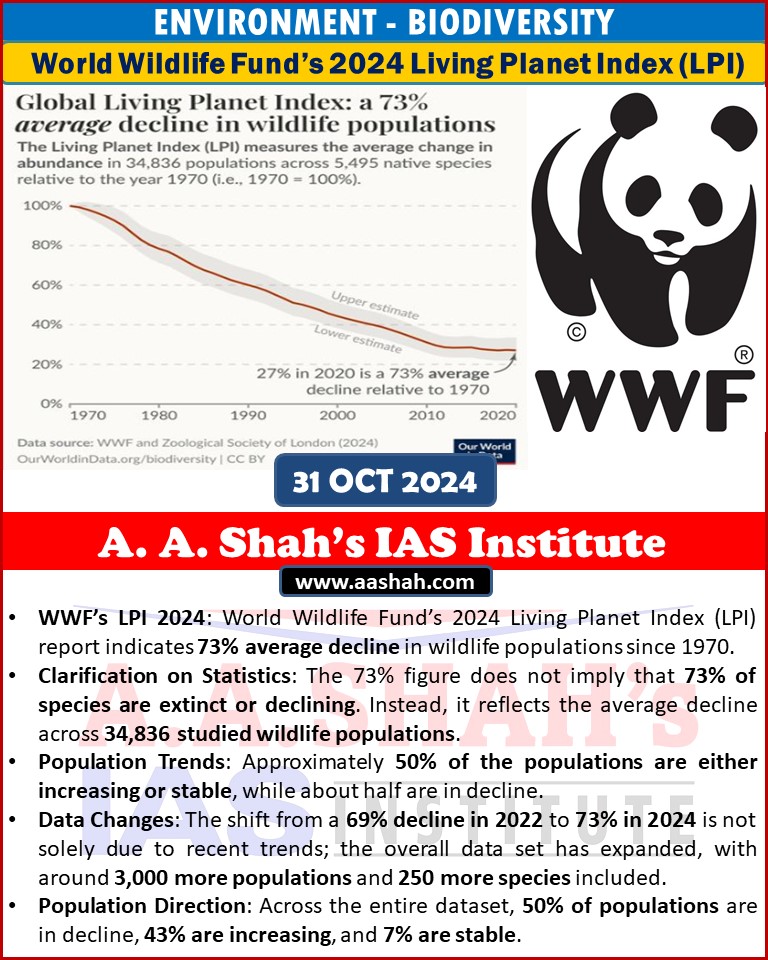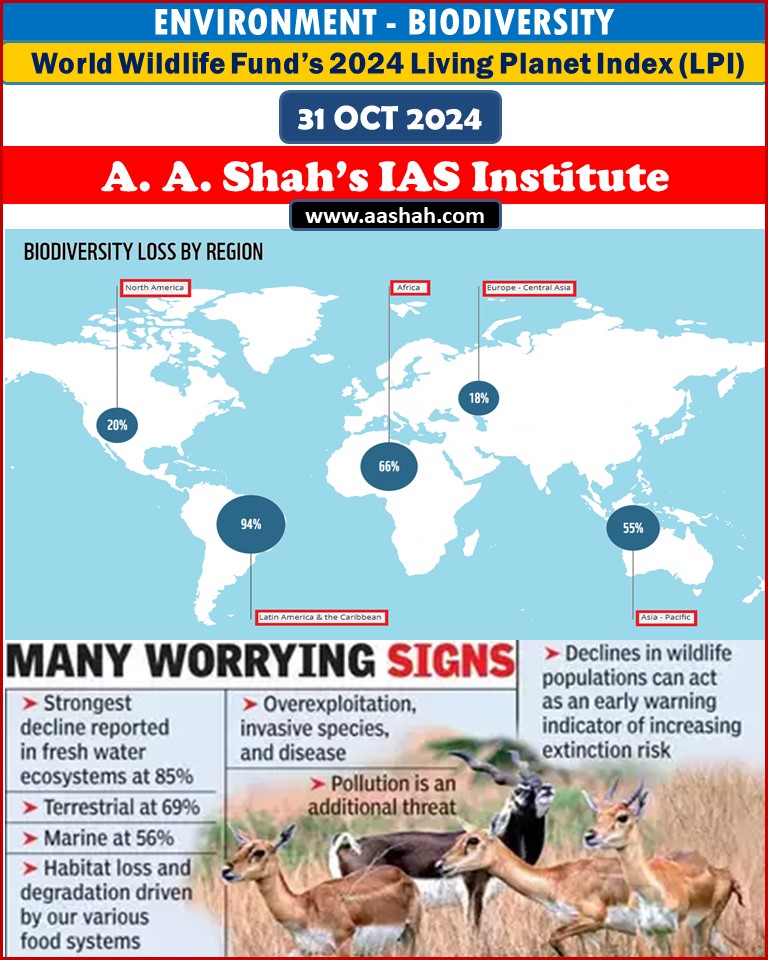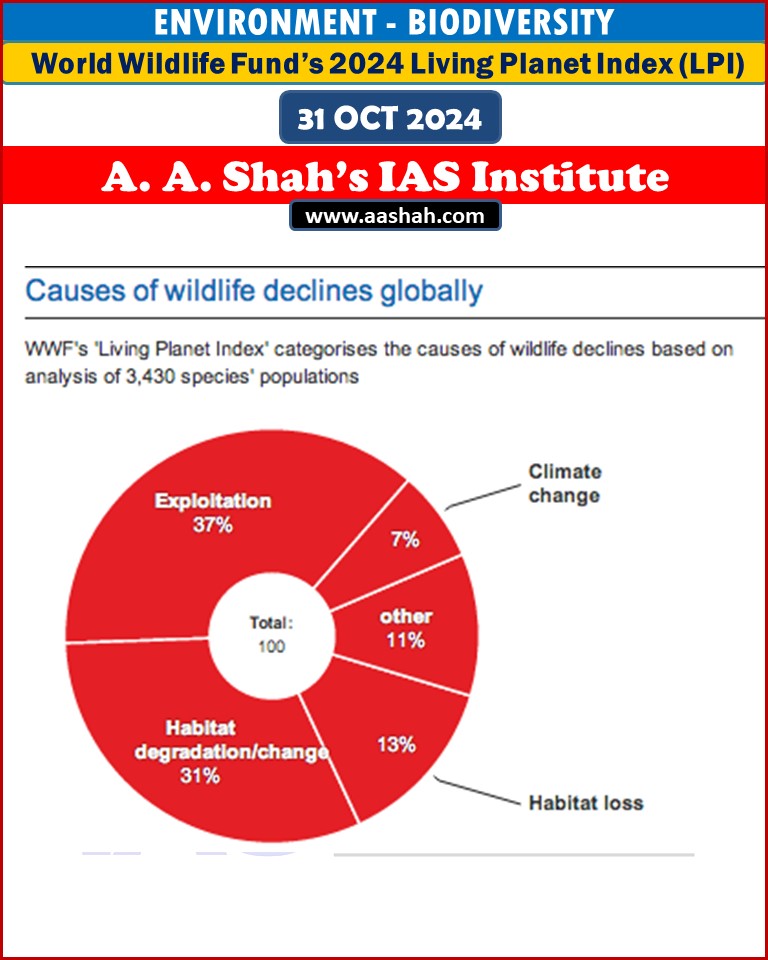
•WWF’s LPI 2024: World Wildlife Fund’s 2024 Living Planet Index (LPI) report indicates 73% average decline in wildlife populations since 1970.
•Clarification on Statistics: The 73% figure does not imply that 73% of species are extinct or declining. Instead, it reflects the average decline across 34,836 studied wildlife populations.
•Population Trends: Approximately 50% of the populations are either increasing or stable, while about half are in decline.
•Data Changes: The shift from a 69% decline in 2022 to 73% in 2024 is not solely due to recent trends; the overall data set has expanded, with around 3,000 more populations and 250 more species included.
•Population Direction: Across the entire dataset, 50% of populations are in decline, 43% are increasing, and 7% are stable.


